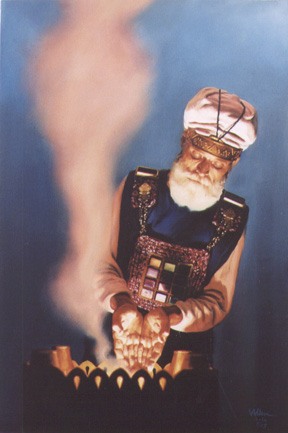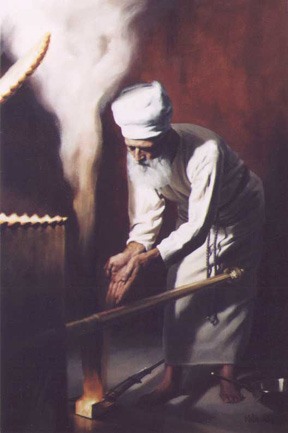 Since ancient times,
natural aromatic plant substances have played a vital
role in the daily life of everyday folks, in every native culture throughout
the world. More recently, over the past few generations, this vital link
between people and plants has become diminished, and many of us are losing
touch with the earth and our own state of health.
Since ancient times,
natural aromatic plant substances have played a vital
role in the daily life of everyday folks, in every native culture throughout
the world. More recently, over the past few generations, this vital link
between people and plants has become diminished, and many of us are losing
touch with the earth and our own state of health.
One native culture, which thousands of years ago based its medicine and religious ceremonies on aromatic plants, has begun to re-emerge. After nearly 2,000 years in exile, the people of Israel are returning to Jerusalem to rebuild the Temple and renew its ceremonies. Behind the tumultuous scenes and out of view of the news media, a dedicated group of people are quietly restoring ancient customs, rebuilding the original vessels and instruments and a number of special schools are training those who will use them. Central to all of the ceremonies conducted in the Temple was the Incense Offering. It consisted of a precise mixture of 11 Holy Spices, known in Hebrew as the Ketoret Bisamim (mentioned in Exodus XXX 34-38). During the days of the Temple, the Ketoret is burned every evening and morning on the golden Incense Altar by the Cohanim (Priests), in front of the Holy Ark in the Templeís Sanctuary. According to the Zohar, the Incense Offering is the most precious part of the Temple service in the eyes of G-d, and every Priest hopes to have the honour of conducting this service, which is permitted only as a once-in-a-lifetime opportunity. It is said that one who has had the privilege to offer the Incense is rewarded by the Holy One with wealth and prosperity forever, in this world and the next. During the days of the Temple, the exact method of Ketoret preparation by the Master Perfumer was a closely guarded secret. Today we are still unraveling the mystery of exactly which ingredients and processes were used to formulate the finely ground mixture. Although there are still varying opinions and speculation about some aspects of the Ketoret, the wise ones among us have been able to identify the botanical sources of the main ingredients.
Working together with Tiferet International, we have been able to authenticate and obtain all of the 11 of the original ingredients of the Ketoret. We are honored to present them for you pleasure as anointments, air fragrances, ceremonial spices and for further exploration, in the hope and prayer that the Holy Temple in Jerusalem will be quickly and joyfully rebuilt. Within the Holy Temple stood an altar of Acacia Wood overlaid with beaten gold. Upon it was burned the Ketoret, an incense made up of 11 different spices. The names of the spices are enumerated in Tractate Keritot (folio 6a) of the Talmud Bavli (see below) and are repeated daily in the morning and afternoon services. The Talmud relates that women, as far away from Jerusalem as Jericho, did not wear perfumes because the fragrance emanating from the Ketoret so filled the air. The Talmud further relates that three things revive a personís soul: pleasant sights, pleasant sounds and pleasant smells. These Ketoret spices, now made available in oil form, were especially prepared for use in the Havdallah ceremony. As we begin our week with the fragrance of the Holy Temple reviving our souls, may we merit to see, hear and smell the sights, sounds and fragrances of the Holy Third Temple. The 11 spices of the Ketoret are:
You can order the Ketoret spices directly from our on-line catalog.
|
 And although there are strict prohibitions against experimentation with the
various plant materials in powder form, we have been advised by our
highly-respected teachers in Jerusalem that there is no prohibition
whatsoever against enjoyment of the essential oil extracts of these same
botanicals. In fact, we have been greatly encouraged to use and enjoy them,
and to make these very special and beautifully fragrant oils available to
our extended family throughout the world.
And although there are strict prohibitions against experimentation with the
various plant materials in powder form, we have been advised by our
highly-respected teachers in Jerusalem that there is no prohibition
whatsoever against enjoyment of the essential oil extracts of these same
botanicals. In fact, we have been greatly encouraged to use and enjoy them,
and to make these very special and beautifully fragrant oils available to
our extended family throughout the world.


